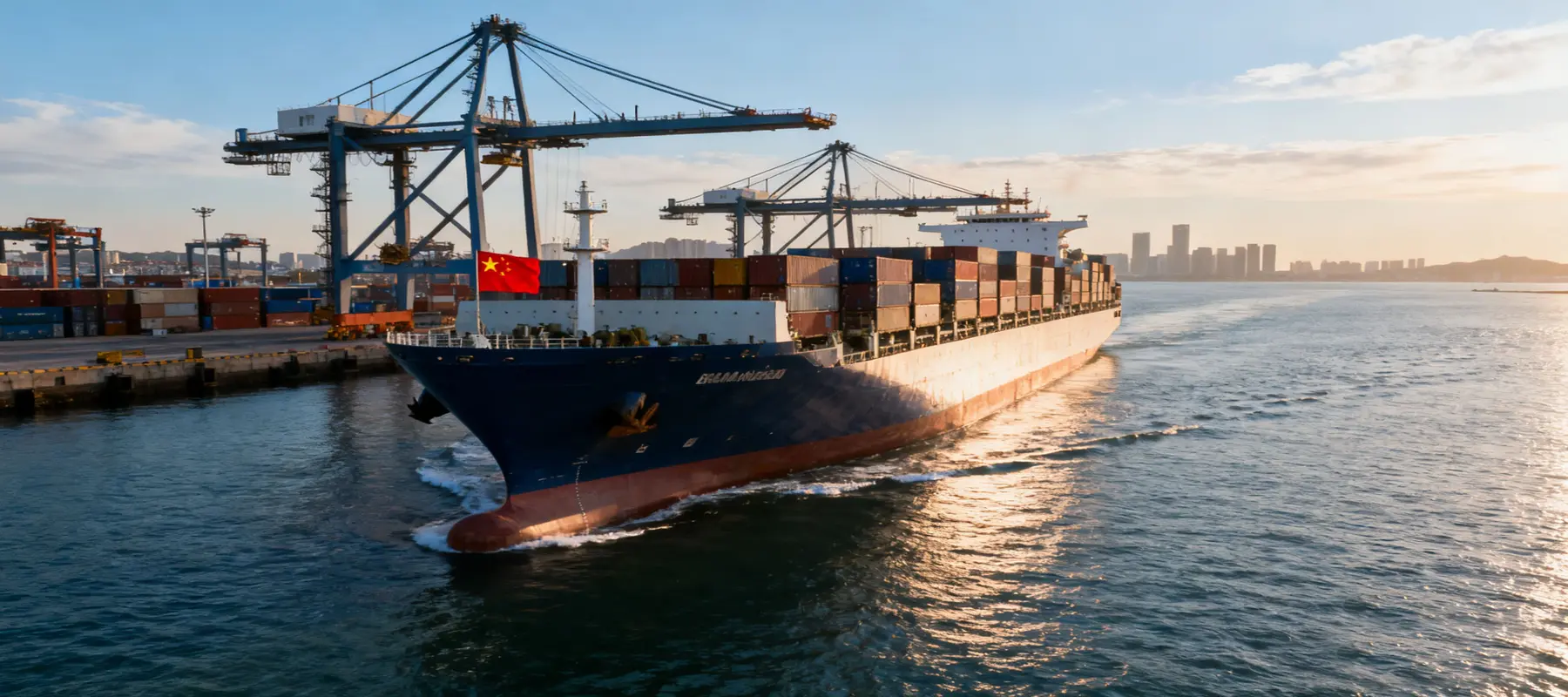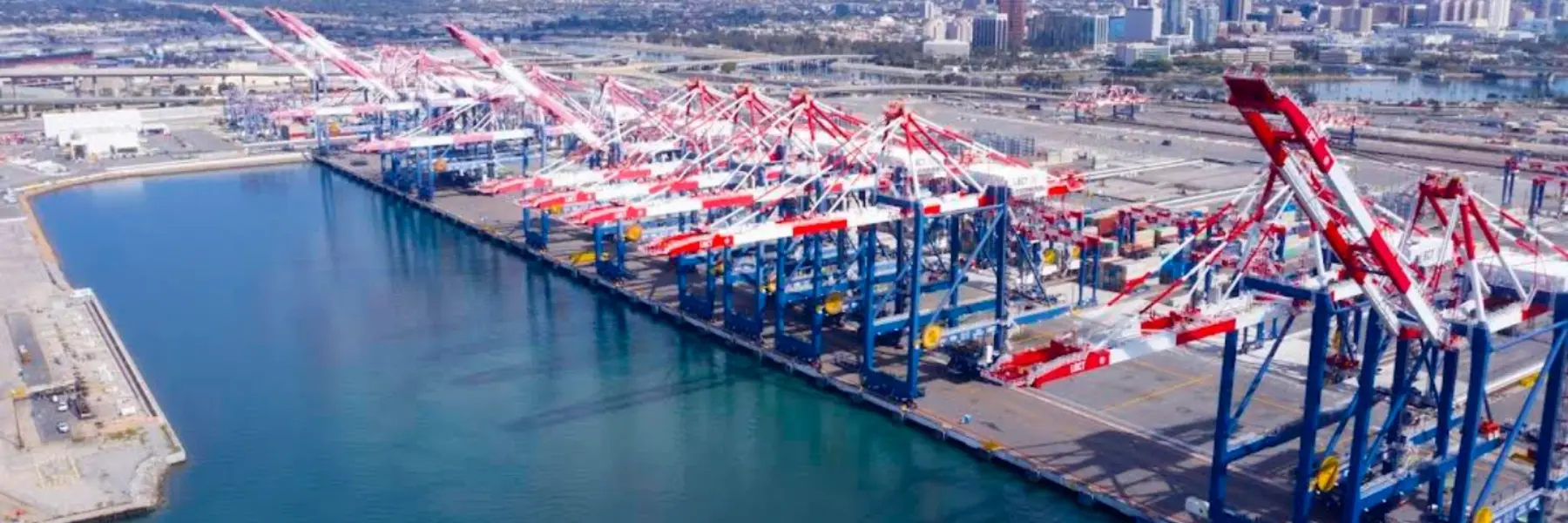Complete Guide to Shipping from China to Port Isabel: Rates, Schedules & Customs Tips
Port Isabel, a vibrant coastal city in southern Texas, sits at the crossroads of U.S.-Mexico cross-border trade, tourism, and commercial fishing—making shipping from China to Port Isabel a critical link for local businesses. As a small port city on the Gulf of Mexico, Port Isabel relies on nearby major international seaports (Port of Houston, Port of Brownsville) for global cargo, followed by short inland transit to its docks and industrial zones. Whether you’re importing cross-border trade goods, fishing equipment, or tourism supplies, understanding Ocean FCL, Ocean LCL, Ocean Freight, Airfreight costs, seasonal ship schedules, and border-focused customs rules is key to optimizing your supply chain. Partnering with a trusted China Freight forwarder like WanHaoFreight forwarder simplifies these steps, cutting costs and minimizing cross-border delays. This guide covers everything you need to know about shipping from China to Port Isabel.
Ocean Freight from China to Port Isabel: FCL vs. LCL
Ocean Freight is the backbone of shipping to Port Isabel, accounting for over 75% of cargo—driven by its role in cross-border trade and bulk goods transport. Cargo first arrives at Gulf Coast international seaports (Houston, Brownsville) before moving 100–150 miles inland to Port Isabel via truck or barge. It is split into two primary modes: Ocean FCL (Full Container Load) and Ocean LCL (Less than Container Load).
Ocean FCL: Ideal for Bulk Cross-Border & Industrial Cargo
Ocean FCL involves booking an entire container (10+ cubic meters/CBM) for exclusive use, perfect for Port Isabel’s cross-border traders importing wholesale goods (e.g., textiles, electronics), fishing fleets receiving bulk gear, or construction firms sourcing building materials. Key benefits include faster transit (no consolidation waits), lower damage risk (sealed containers protect high-value cross-border cargo), and predictable pricing (inclusive of inland transport to Port Isabel).
Rates for Ocean FCL from China to Port Isabel depend on three factors: Chinese origin port, U.S. hub seaport, and container size. The most common sizes are 20-foot (20GP) and 40-foot (40GP/40HQ). From Shanghai Port (a top international seaport), a 20GP container to the Port of Houston costs $1,800–$2,600, plus $200–$350 for truck transport to Port Isabel (a 2.5-hour drive). A 40HQ (high cube, for bulky fishing nets or textiles) ranges from $2,300–$3,300, plus $300–$450 for inland transit. From Shenzhen Port (another major international seaport), ocean rates to Houston are $120–$280 cheaper, thanks to frequent Gulf Coast sailings. Seasonal peaks (March–June, ahead of cross-border holiday trade and fishing season) raise ocean rates by 20–30%, while off-peak (December–February) offers 10–15% savings.
WanHaoFreight forwarder specializes in Ocean FCL solutions for shipping from China to Port Isabel. Their team negotiates with Gulf Coast carriers (Maersk, CMA CGM) for competitive hub seaport rates and partners with Texas-based trucking firms experienced in cross-border logistics to ensure seamless delivery to Port Isabel’s docks. For cross-border traders with regular monthly shipments, WanHaoFreight offers long-term contracts to lock in combined ocean-inland costs.
Ocean LCL: Cost-Saver for Smaller Shipments
If your cargo is less than 10 CBM (e.g., small-batch e-commerce goods for Port Isabel’s local shops, replacement fishing parts, or tourism supplies like beach gear), Ocean LCL is the optimal choice. With LCL, your goods are consolidated with other shippers’ cargo at the hub seaport, spreading costs across parties—critical for Port Isabel’s small businesses and independent traders.
Ocean LCL rates from China to Port Isabel are calculated by chargeable weight (volume vs. actual weight). From Guangzhou Port (a key China Freight forwarder hub), rates to the Port of Brownsville (closer to Port Isabel than Houston, cutting inland costs) are $75–$115 per CBM, plus $150–$250 for truck transport to Port Isabel (a 1.5-hour drive). For example, shipping 5 CBM of beach towels and sunscreen (for Port Isabel’s tourism season) from Guangzhou to Port Isabel would cost $375–$575 (ocean to Brownsville) + $150–$250 (inland) = $525–$825. Additional fees include consolidation ($45–$85), documentation ($30–$50), and hub seaport handling ($70–$100). Unlike many freight forwarders, WanHaoFreight provides all-inclusive quotes—no hidden surcharges for cross-border paperwork or last-mile delivery to Port Isabel’s downtown shops.
Transit time for LCL is 28–36 days (22–28 days ocean to hub seaport + 3–8 days inland to Port Isabel), compared to 24–30 days for FCL. If time isn’t critical (e.g., pre-season tourism stock), LCL is a budget-friendly option for small-scale shipping from China to Port Isabel.
Ocean Freight Schedules: China to Port Isabel
Ship schedules to Port Isabel revolve around Gulf Coast hub seaports, with weekly sailings from major Chinese ports ensuring consistent cargo flow for cross-border and local businesses.
From Shanghai to Port of Houston: Carriers like Hapag-Lloyd offer weekly sailings via the Panama Canal, with a 22–26 day ocean transit time. Adding 1–2 days for inland trucking to Port Isabel brings the total to 23–28 days. From Shenzhen to Houston: Weekly sailings take 24–28 days ocean + 1–2 days inland (total 25–30 days).
From Shanghai to Port of Brownsville: Bi-weekly sailings take 24–28 days ocean, plus 1 day for inland transport to Port Isabel (total 25–29 days). Rates here are $150–$300 higher than Houston, but shorter inland transit suits time-sensitive cargo like fresh fishing bait or cross-border retail goods.
Weather is a key variable: Hurricane season (June–November) in the Gulf of Mexico can delay hub seaport arrivals by 3–7 days, while peak cross-border trade seasons (May–July) may cause brief congestion in Chinese ports. WanHaoFreight forwarder provides real-time ship tracking for both ocean and inland stages, allowing you to monitor cargo progress and adjust cross-border delivery plans. Book 3–4 weeks in advance to secure preferred sailings—especially during fishing or tourism peaks.
Airfreight from China to Port Isabel: Speed for Urgent Cargo
Airfreight is critical for Port Isabel’s urgent needs—such as emergency fishing parts, perishable cross-border goods (e.g., fresh produce), or time-sensitive tourism supplies (e.g., holiday decor). Port Isabel relies on nearby airports: Brownsville/South Padre Island International Airport (BRO, 30 miles away) and McAllen Miller International Airport (MFE, 60 miles away), with short ground transport to the city.
Airfreight Rates & Transit Time
Airfreight rates from China to Port Isabel depend on weight, flight type, and airport choice. From major Chinese airports (Shanghai Pudong, Guangzhou Baiyun) to BRO: Direct cargo flights are limited, so most use Houston George Bush Intercontinental Airport (IAH) as a hub. Flights from Shanghai Pudong to IAH cost $3.90–$6.30 per kilogram, with a 2-hour truck transport to Port Isabel adding $50–$90 per shipment. For example, shipping 80kg of emergency fishing engine parts from Shanghai to Port Isabel would cost $312–$504 (airfare to IAH) + $50–$90 (inland) = $362–$594.
Direct flights to MFE (via Dallas) cost $4.10–$6.50 per kilogram but are only available for high-priority cargo. Transit time for hub-based Airfreight is 4–6 days (flight + customs + ground transport); direct flights take 3–5 days. Non-direct flights (via Atlanta) cost $3.10–$5.10 per kilogram but add 1–2 days to transit.
WanHaoFreight forwarder partners with airlines serving South Texas (United, Delta, China Southern) to secure priority cargo space—critical during Port Isabel’s tourism 旺季 (spring break, summer) or fishing emergencies. They also offer temperature-controlled Airfreight for perishables (e.g., cross-border fresh fruit) and door-to-door service, covering pickup from Chinese warehouses to delivery at Port Isabel’s docks, shops, or fishing fleets.
Customs Clearance for Port Isabel-Bound Cargo
Customs clearance for Port Isabel shipments occurs at the hub seaport/airport (Houston/Brownsville/IAH) and is managed by U.S. Customs and Border Protection (CBP). Given Port Isabel’s cross-border focus, compliance with both U.S. and Mexican customs rules (for re-exported goods) is critical to avoid delays.
Required Documentation
WanHaoFreight forwarder helps prepare and review these documents to avoid errors. For example, missing Mexican import licenses for cross-border cargo can delay delivery by 5–7 days—their bilingual team (English/Spanish) coordinates with Mexican customs to ensure compliance.
Tariffs & Duties
Tariffs on goods from China to Port Isabel depend on HS codes and intended use. Key examples for Port Isabel’s economy:
Duties are calculated as a percentage of the goods’ FOB value. Port Isabel has no local import taxes, but Texas state sales tax (6.25%) applies to goods sold within the state. WanHaoFreight assists with duty drawback programs—if you re-export cross-border goods from Port Isabel to Mexico, you may qualify for a refund of duties paid.
Compliance Checks
CBP focuses inspections on high-risk cargo: cross-border textiles (for counterfeiting), perishables (for safety), and electronics (for FCC compliance). To avoid delays:
WanHaoFreight partners with third-party testing labs in China to verify compliance before shipping, reducing inspection risk by 40–50%—critical for avoiding missed cross-border trade deadlines in Port Isabel.
How to Choose the Right Freight Forwarder for Shipping from China to Port Isabel
Port Isabel’s cross-border focus and Gulf Coast location demand a freight forwarder with regional expertise and bilingual support. Here’s why WanHaoFreight forwarder stands out:
Expertise in China-Port Isabel Routes
WanHaoFreight has over a decade of experience shipping to South Texas coastal cities like Port Isabel. Their team understands Gulf Coast logistics (hub seaports, hurricane preparedness), cross-border trade rules, and local industry needs (fishing, tourism, cross-border retail). They know how to prioritize urgent cargo (e.g., fishing parts) and navigate U.S.-Mexico customs.
Transparent Pricing & Easy Get A Quote Process
Their website’s “Get A Quote” tool lets you input cargo details (size, weight, urgency, intended use—e.g., “cross-border resale”) and receive a personalized, all-inclusive quote within 24 hours. The quote breaks down ocean/air costs, inland transport, customs fees, and cross-border paperwork charges—no hidden surprises for small businesses.
Full-Service Support
WanHaoFreight handles end-to-end logistics: warehouse storage in China, cargo insurance (covering ocean/air, inland, and cross-border transit), customs clearance (U.S. and Mexico), and delivery to Port Isabel’s docks, shops, or fishing fleets. Whether you need Ocean FCL for cross-border bulk goods, Ocean LCL for tourism supplies, or Airfreight for emergencies, their team provides dedicated support.
Conclusion
Shipping from China to Port Isabel requires balancing Gulf Coast logistics and cross-border trade rules—but with WanHaoFreight forwarder, it’s manageable. Choose Ocean FCL for bulk cross-border or industrial cargo, Ocean LCL for small shipments, or Airfreight for urgency. Leverage hub seaports like Houston or Brownsville for cost-effective ocean shipping, and rely on WanHaoFreight’s expertise to avoid delays. With transparent pricing, easy “Get A Quote” access, and cross-border knowledge, WanHaoFreight lets you focus on Port Isabel’s core industries while they handle global shipping. Ready to start? Contact WanHaoFreight today for your personalized China-to-Port Isabel solution.
 Easy Shipping From Global, Save Cost
Easy Shipping From Global, Save Cost















